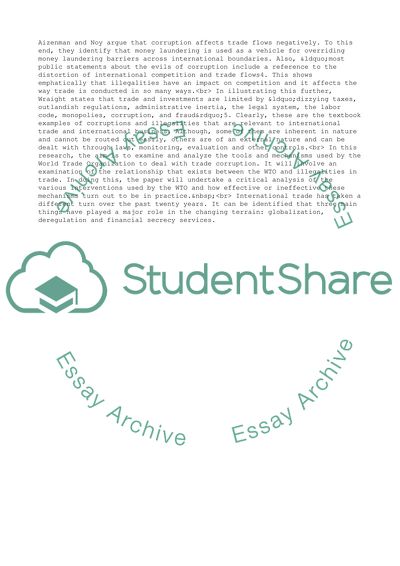Cite this document
(The World Trade Organization, Money Corruption and Money Laundering Research Paper, n.d.)
The World Trade Organization, Money Corruption and Money Laundering Research Paper. Retrieved from https://studentshare.org/business/1785196-trade-and-money-laundering-how-trade-flow-is-affected-by-monetary-corruption-and-what-is-the-solution
The World Trade Organization, Money Corruption and Money Laundering Research Paper. Retrieved from https://studentshare.org/business/1785196-trade-and-money-laundering-how-trade-flow-is-affected-by-monetary-corruption-and-what-is-the-solution
(The World Trade Organization, Money Corruption and Money Laundering Research Paper)
The World Trade Organization, Money Corruption and Money Laundering Research Paper. https://studentshare.org/business/1785196-trade-and-money-laundering-how-trade-flow-is-affected-by-monetary-corruption-and-what-is-the-solution.
The World Trade Organization, Money Corruption and Money Laundering Research Paper. https://studentshare.org/business/1785196-trade-and-money-laundering-how-trade-flow-is-affected-by-monetary-corruption-and-what-is-the-solution.
“The World Trade Organization, Money Corruption and Money Laundering Research Paper”, n.d. https://studentshare.org/business/1785196-trade-and-money-laundering-how-trade-flow-is-affected-by-monetary-corruption-and-what-is-the-solution.


